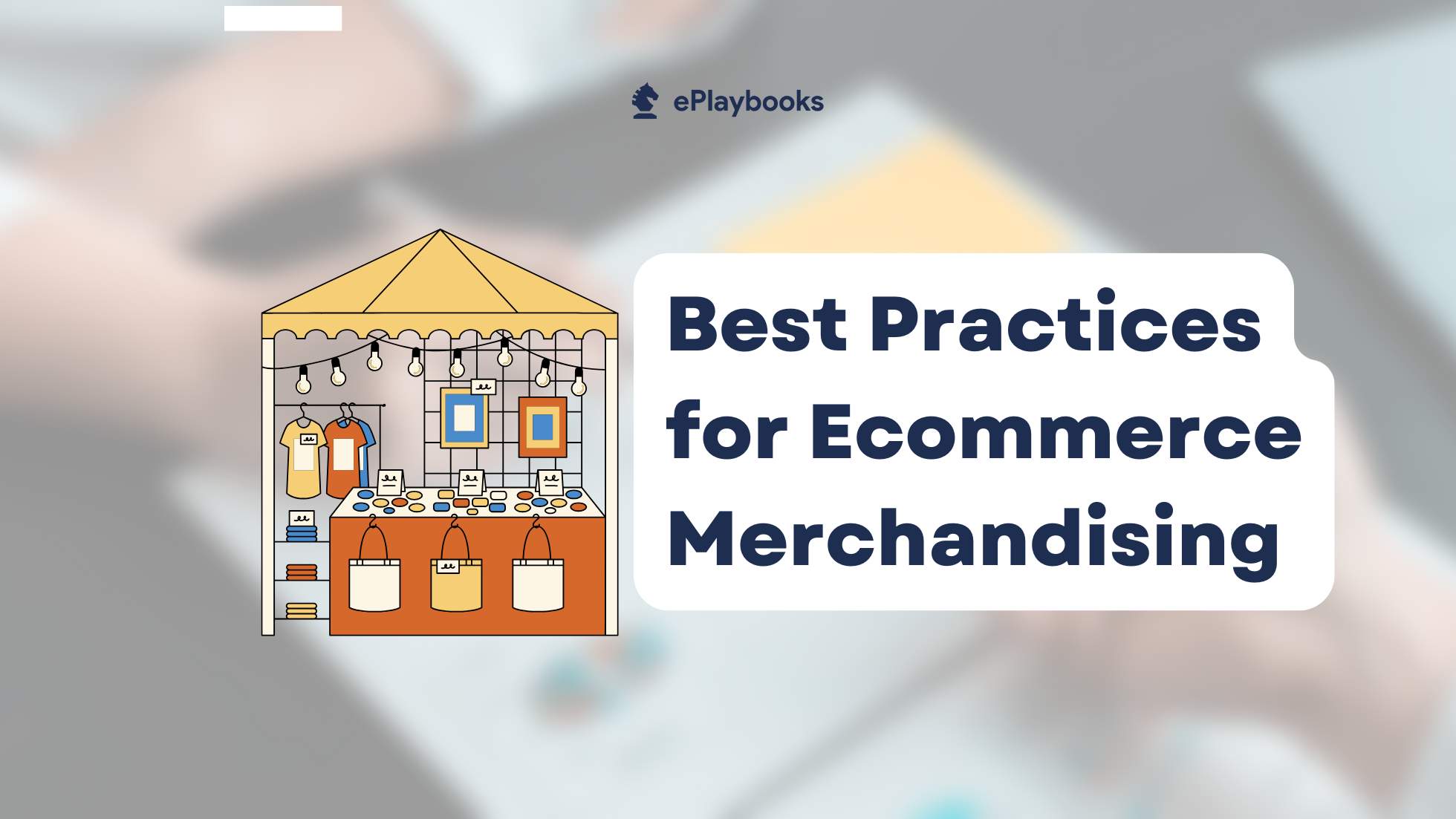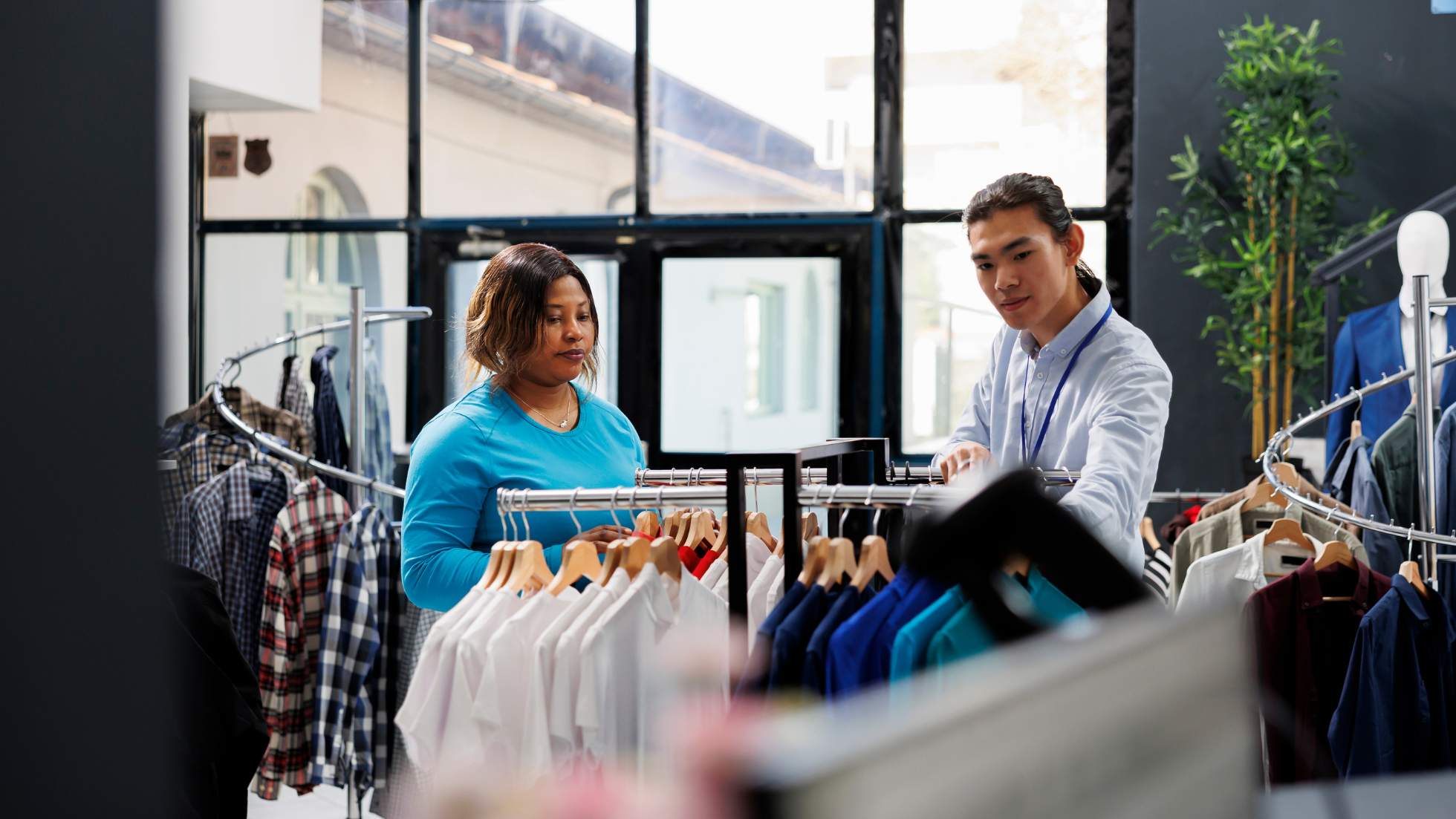Turbo-Charge Your Revenue!
You’ve probably already considered selling on Amazon but its way easier than you think.
Call Us Now
Standing out in the competitive online marketplace is no easy task. With countless products and endless choices, customers often decide within seconds whether to stay on your site or move on. Ecommerce merchandising is not just about listing your products, but about presenting them in a way that attracts, engages, and convinces shoppers to buy. Think of it as building a digital storefront that not only looks good but also works hard to boost sales and customer satisfaction.
This is something we specialize in at ePlaybooks. We help our clients organize product categories, create personalized shopping experiences, and guide them through proven strategies that turn mere browsing into buying.
In this article, we will share with you what you need to know about ecommerce merchandising and, specifically, some best practices you can incorporate into your ecommerce store.
So what is ecommerce merchandising? Ecommerce merchandising is the practice of strategically presenting and promoting products in your online store to guide shoppers toward making a purchase. It’s the online version of how a physical retailer arranges products on shelves or sets up a promotional stand, but in the digital space.
So imagine walking into a clothing store. You see shelves neatly arranged by style, boxes neatly arranged, mannequins wearing complete outfits, and a promotional offer that says “Buy Two Shirts, Get A Free Hat” sign near the checkout. All of that is merchandising. It is designed to inspire, grab attention, and make it easier for you to buy more.
Online, a fashion website might feature a “Summer” or “Back-to-School” collection banner on its homepage, pulling shoppers into a curated selection of products. On Amazon, we see “Frequently Bought Together” bundles (like a laptop with a sleeve and wireless mouse), encouraging you to add more to your cart.
At the core, ecommerce merchandising is all about shaping a customer’s journey, making products visible, appealing, and easy to buy. When it is done right, it not only boosts your sales but also makes shopping enjoyable and memorable for your customers.

When we build online stores for our clients at ePlaybooks, it involves various components that work together to create a smooth shopping experience for consumers. So, here are some key components of ecommerce merchandising:
A great product presentation means showing your items in the best possible way. Your product page is like the shop window of your online store. This is where your customers will decide if they want to buy from you or your competitors.
Ensure you use high-quality photos from different angles, short videos, and even lifestyle shots so shoppers can picture the product in real life. Pair that with clear, benefit-driven descriptions, not just generic technical details. For example, instead of saying your bamboo towels are “Made of bamboo,” you can say “Soft, breathable bamboo towels that keep you dry and clean.”
Imagine if you walked into a store where everything is scattered with no signs. You’d probably walk out. That’s exactly how customers feel on a badly designed website. It only takes customers a few seconds to decide if they want to stay or leave your ecommerce site. Good site navigation makes it easy for shoppers to find what they’re looking for. So, use simple menus, product categories, and helpful filters (price, color, size). When browsing feels effortless, customers are more likely to stay and shop.
Shoppers love it when a store “gets” them. Personalization is about tailoring the experience to each customer. This could mean showing product recommendations based on past purchases, suggesting seasonal items relevant to their location, or welcoming them back with a personalized homepage. Netflix does this with movies, Amazon does it with products, and you can do the same with your ecommerce store. Personalization makes customers feel valued and encourages them to return.
This is the secret sauce to increasing your customers’ order value without being pushy. Cross-selling is when you suggest related products. For example, “Buying a laptop? Here’s a great laptop bag.” Upselling is when you encourage customers to upgrade. “Looking at the 64GB phone? For just $50 more, you get 128GB of storage.”
Both strategies work because you’re not just selling but helping customers get more value from their purchase.
Everybody loves a good deal when shopping online. Promotions and discounts are powerful merchandising tools that can create urgency and excitement. So think flash sales, holiday discounts, buy-one-get-one offers, or free shipping. You want to use them carefully, as too many discounts can hurt your brand, but the right ones at the right time can boost conversions and clear your inventory fast.
Here’s why ecommerce merchandising is important:
The biggest reason merchandising matters is simple: it drives revenue. When products are presented well through quality images, well-written persuasive descriptions, and strategically placed, customers are more likely to click “Add to Cart.” If you add upselling and cross-selling, you can increase average order value without customers feeling pressured, leading to more sales. Amazon’s “Frequently Bought Together” feature is a classic example. It is one of Amazon’s biggest drivers of additional sales.
Online shoppers don’t have the luxury of touching, trying, or testing products. That means your site does all the work. Thoughtful ecommerce merchandising, like easy navigation, well-written product categories, and personalized recommendations, removes friction and helps customers find exactly what they’re looking for. A smooth, enjoyable journey keeps them on your site longer and makes them more likely to buy.
In ecommerce, trust is everything. Customers are handing over money without physically seeing the product, so your merchandising has to reassure them. Consistent visuals, product descriptions, social proof, and professional design all tell the customer that your brand is reliable. Over time, this not only builds trust but also reinforces your brand identity, making your store memorable in a sea of competitors.
Great merchandising creates an experience that brings people back. When shoppers feel that your store “gets them” through personalization, curated collections, or loyalty-driven promotions, they’re more likely to become repeat customers. And repeat customers are gold in ecommerce. Studies show us that repeat customers spend more and recommend brands they trust.
Merchandising isn’t just about what looks nice. It’s also about a business strategy. By analyzing your product’s performance, you can highlight bestsellers, create bundles for slow-moving items, or run discounts on overstocked products. This helps manage inventory efficiently, frees up warehouse space, and ensures you’re not sitting on dead stock.

Now let’s look at some best practices that can help you maximize sales, increase customer satisfaction, and build loyalty:
Without customer insights, even the best merchandising strategies may fail. Ecommerce merchandising starts with knowing who you’re selling to.
You want to study analytics to track customer behavior, such as which categories they explore, products they add to cart, or where they drop off.
Segment these customers by demographics, buying history, and preferences to create tailored experiences. Listen to feedback from reviews, surveys, and social media to refine product offerings. When you align merchandising decisions with customer needs, you create a personalized journey that drives conversion and increases customer satisfaction.
Your product page is often the final stop before a customer decides to buy. So make it count.
Use high-quality images and videos showing multiple angles, lifestyle shots, and even 360 views.
Ensure your product descriptions are benefit-driven, including dimensions, materials, and care instructions. Feature ratings, reviews, and testimonials where customers can see them. Show low stock levels or limited-time offers to encourage quicker decisions. Finish off with buttons like “Add to Cart” or “Buy Now”. Ensure they are bold and easy to find.
Cluttered navigation frustrates shoppers and can lead to abandoned sessions. You want to create intuitive categories that align with customer expectations.
Use filters and sorting options like price, size, or color to help shoppers find what they want quickly. Highlight seasonal or trending collections (e.g., “Summer Picks” or “Holiday Picks”). A good site structure reduces friction and increases the likelihood of conversion.
Personalization can set your store apart. Modern shoppers expect more than one-size-fits-all browsing. Use AI-driven recommendations like “You may also like” or “Frequently bought together” suggestions. Personalize your landing pages for repeat visitors based on past browsing or purchases. Also, use dynamic homepage banners showing relevant promotions or trending products in their region. Personalization makes shoppers feel understood and valued, boosting average order value.
Cross-selling and upselling can encourage your customers to buy more. Suggest complementary products (e.g., a phone case with a smartphone). Offer premium versions of the product with added value and bundle related items at a discounted rate to increase orders.
These strategies not only increase revenue but also enhance customer satisfaction by meeting more of their needs in one purchase.
Just like a physical store, visual appeal matters online. Use eye-catching banners on your homepage to promote seasonal deals or bestsellers. Maintain a consistent look and feel across product photos, fonts, and colors. Tell stories through visuals. Lifestyle photography can help customers imagine the product in use. A visually appealing store increases trust and strengthens your brand identity.
Your ecommerce platform will give you a wealth of data that you can use to optimize performance. You can study analytics to track product performance (identify top sellers, slow movers, and items with high return rates). Run A/B tests on layouts, product placements, and pricing strategies. Promote fast-selling products and discount or bundle slow movers. Data-driven merchandising ensures decisions are based on facts, not assumptions.
A seamless mobile experience directly influences your conversions and customer retention. With mobile commerce growing rapidly, you want to make sure your merchandising adapts. Ensure product images, descriptions, and CTAs are clear on smaller screens. Use simplified menus and easy-to-tap filters. Ensure your site has faster load times. Mobile shoppers are less patient, so optimize your site for speed.
Ecommerce merchandising is more than just listing products on your ecommerce site. It’s about creating experiences that inspire shoppers to buy your product. By combining compelling visuals, careful product organization, personalization, upselling and cross-selling, and data-driven insights, you can transform your online store into a profit-making site.
With just a click, you can contact ecommerce experts at ePlaybooks who will help you transform your store into a powerful selling tool.
The four main types of merchandise typically include:
An ecommerce merchandiser is responsible for making sure products are presented in the best possible way to drive sales. Their role includes organizing product categories and navigation, writing and overseeing product descriptions, running promotions and campaigns, analyzing customer data and product performance to optimize sales, etc.
Essentially, an ecommerce merchandiser bridges the gap between marketing, sales, and the customer’s experience in an online store.
To become an ecommerce merchandiser, you need skills, education, and a willingness to grow.
You want to have a strong knowledge of online retail platforms (like Shopify or WooCommerce), an eye for design, analytical skills, and customer psychology. A background in business, marketing, retail management, or ecommerce is helpful. Lastly, you want to stay updated with the latest trends in digital marketing and ecommerce.
Merchandising can be grouped into five types:
You’ve probably already considered selling on Amazon but its way easier than you think.
Call Us Now